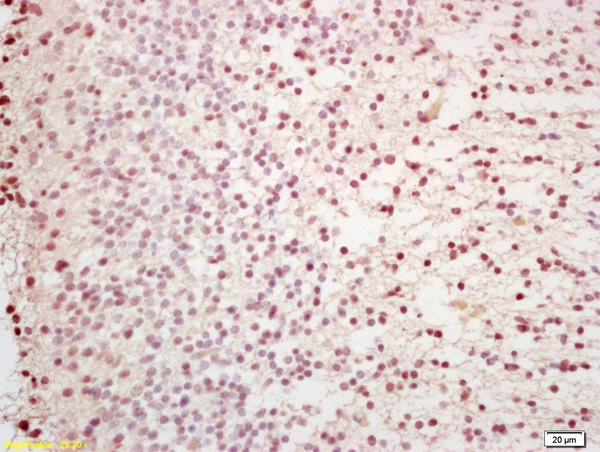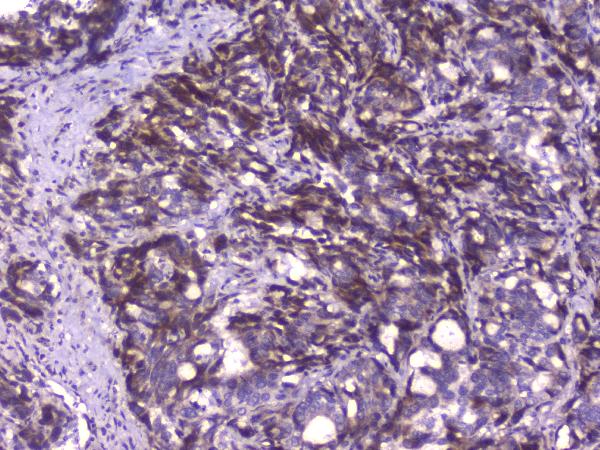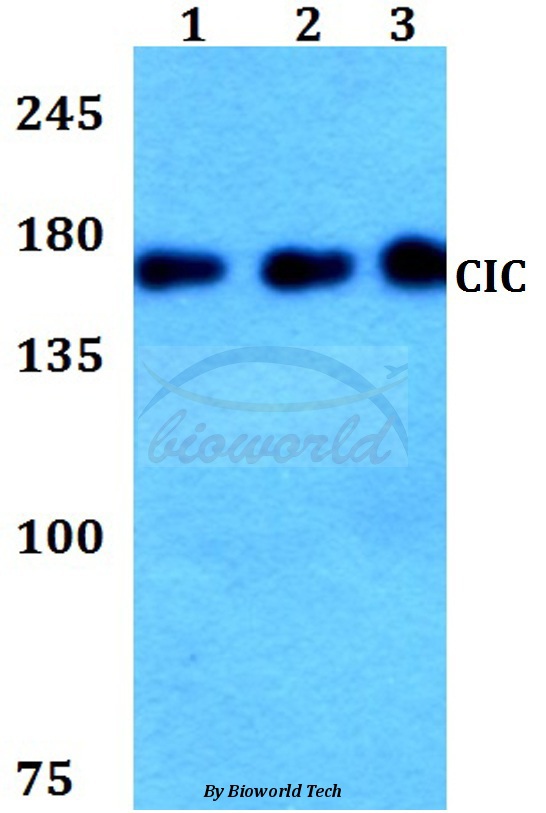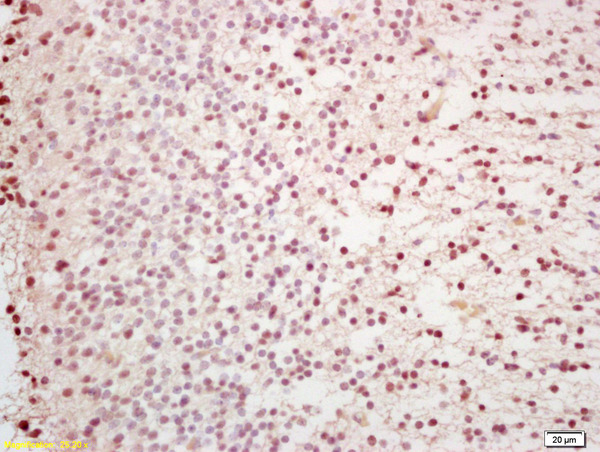
IHC-P analysis of mouse embryonic brain tissue using GTX60259 Capicua antibody. Dilution : 1:200
Capicua antibody
GTX60259
ApplicationsImmunoHistoChemistry, ImmunoHistoChemistry Paraffin
Product group Antibodies
TargetCIC
Overview
- SupplierGeneTex
- Product NameCapicua antibody
- Delivery Days Customer9
- Application Supplier NoteIHC-P: 1:50-400. *Optimal dilutions/concentrations should be determined by the researcher.Not tested in other applications.
- ApplicationsImmunoHistoChemistry, ImmunoHistoChemistry Paraffin
- CertificationResearch Use Only
- ClonalityPolyclonal
- Concentration1 mg/ml
- ConjugateUnconjugated
- Gene ID23152
- Target nameCIC
- Target descriptioncapicua transcriptional repressor
- Target synonymsMRD45, protein capicua homolog
- HostRabbit
- IsotypeIgG
- Protein IDQ96RK0
- Protein NameProtein capicua homolog
- Scientific DescriptionThe protein encoded by this gene is an ortholog of the Drosophila melanogaster capicua gene, and is a member of the high mobility group (HMG)-box superfamily of transcriptional repressors. This protein contains a conserved HMG domain that is involved in DNA binding and nuclear localization, and a conserved C-terminus. Studies suggest that the N-terminal region of this protein interacts with Atxn1 (GeneID:6310), to form a transcription repressor complex, and in vitro studies suggest that polyglutamine-expansion of ATXN1 may alter the repressor activity of this complex. Mutations in this gene have been associated with olidogdendrogliomas (PMID:21817013). In addition, translocation events resulting in gene fusions of this gene with both DUX4 (GeneID:100288687) and FOXO4 (GeneID:4303) have been associated with round cell sarcomas. There are multiple pseudogenes of this gene found on chromosomes 1, 4, 6, 7, 16, 20, and the Y chromosome. Alternative splicing results in multiple transcript variants encoding different isoforms. [provided by RefSeq, Feb 2015]
- Storage Instruction-20°C or -80°C,2°C to 8°C
- UNSPSC12352203







